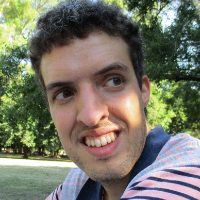Measures of the relative contribution of EEG oscillations are particularly useful to investigate the emergent properties of the rhythmic activities of the brain. The different rhythms of the brain activity are of functional importance to understand how information is processed in the mammalian brain. We used the Bandt-Pompe (BP) permutation methodology for the evaluation of the probability distribution function (PDF) associated with the EEG time series considering the different rhythmic oscillations bands. Based on the quantification of the ordinal “structures” present in the EEG signals and their local influence on the associated probability distribution, we incorporate the time series’ own temporal causality through an algorithm of easy implementation and computation.
In our current study, we quantify the network connectivity strength across electrodes using a symbolic formalism for assessing the PDF. We estimate the causal BP PDF associated to the different electrodes, and for the different frequency bands, to measure the interconnectivity across electrodes using the Jensen-Shannon Divergence between them. In this way obtain a representation of the brain networks when executing different visuo-motor tasks. We evaluate the most relevant interconnectivity for frequency bands during different motor/imagery activities. Interestingly the node centrality provides us a measure that could discriminate between imaginary and realized movements.
P#241
Graph Theory tools for characterize Motor/Imaginary Movements in EEG
Román Baravalle
- La Plata,
- Argentina
- Román Baravalle ¹
- , Natalí Guisande ¹
- , Monserrat Pallares ¹
- , Federico Miceli ¹
- , Mauro Granado ¹
- , Fernando Montani ¹
- 1 IFLP, CONICET & Universidad Nacional de La Plata (UNLP), La Plata, Argentina
- 2 Departamento de Física, Facultad de Ciencias Exactas, Universidad Nacional de La Plata (UNLP), La Plata, Argentina.

